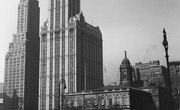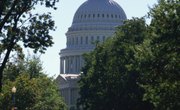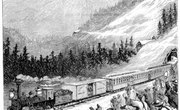The 1950s was a prosperous time in American history. The unemployment rate was low, and families began to buy houses and cars in record numbers. Although this decade was relatively economically stable, it was also socially turbulent. Events that occurred during the civil rights movement brought the nation's attention to racial injustice, and desegregation resulted in significant conflict and violence.
The Civil Rights Movement
The most significant social change during the 1950s was desegregation, which was a direct result of the civil rights movement. Court rulings in the cases Plessy v. Ferguson and Brown v. The Board of Education of Topeka, Kansas, declared that segregation was unconstitutional. This paved the way for equal access to education and employment. However, the desegregation of public spaces did not occur overnight. Protests and riots were common, and resistance was intense. The arrest of Rosa Parks, the death of Emmett Till and the use of the National Guard to allow students access to a previously segregated school in Little Rock, Ark., are examples of the opposition to social change during this decade.
Families
The 1950s was a time when social norms regarding the family began to change. The birth rate increased due to a rising standard of living and low inflation. With the establishment of the Federal Housing Administration, families were able to take out mortgages and buy homes in record numbers. This resulted in families increasingly moving from cities and rural areas to suburbs. Another change to the family occurred when women began to work outside of the home. During the 1950s, the amount of employed women rose by 18 percent.
Taxes
The government expanded its role in the economy during the 1950s by adopting new budgeting practices to fund a variety of programs. For example, the government created budgets to expand social welfare programs such as housing assistance and food stamps. The government also dedicated a significant amount of money to the construction of highways and airports. To fund these projects, taxes, especially income taxes, continued to rise steadily during this decade.
Recession
After decades of increased spending to fund war efforts, the government cut back on defense spending and reduced the national deficit during the 1950s. President Dwight Eisenhower proposed a budget to Congress, which was later approved, to cut the projected deficit of $10 billion in half. In addition, the defense budget was reduced by $5 billion in 1955. Reductions in the government's spending resulted in a mild recession lasting from 1953 to 1954. However, the unemployment rate only briefly rose to 6 percent during the height of this recession.
Related Articles
Writer Bio
Michelle Lee has been writing on the topics of culture and society since 2010. She has published articles in scholarly journals, such as "Social Problems" and the "Journal of Sociology," and also written articles for web-based companies. Lee holds a Bachelor of Arts in ethnic, gender and labor studies from the University of Washington.











